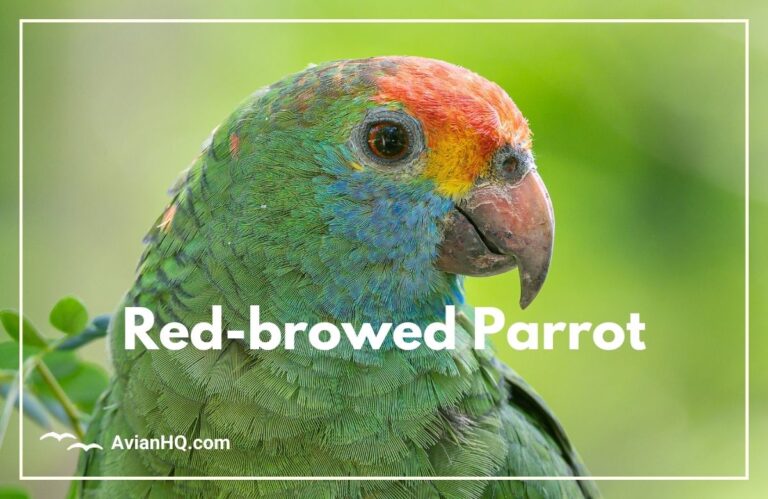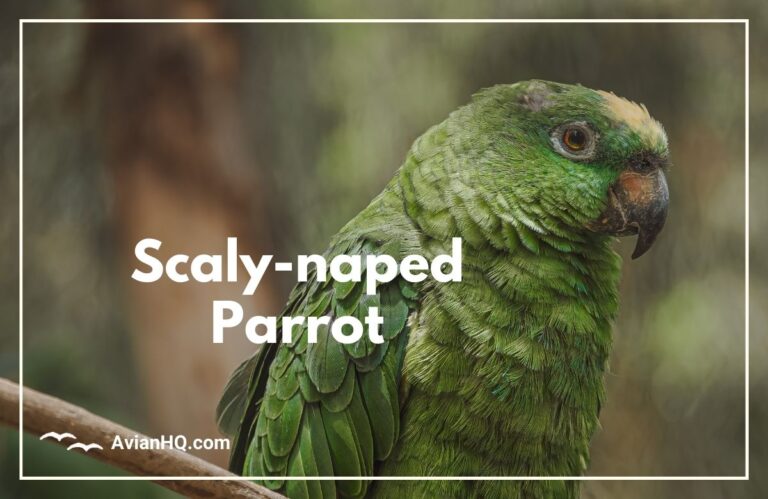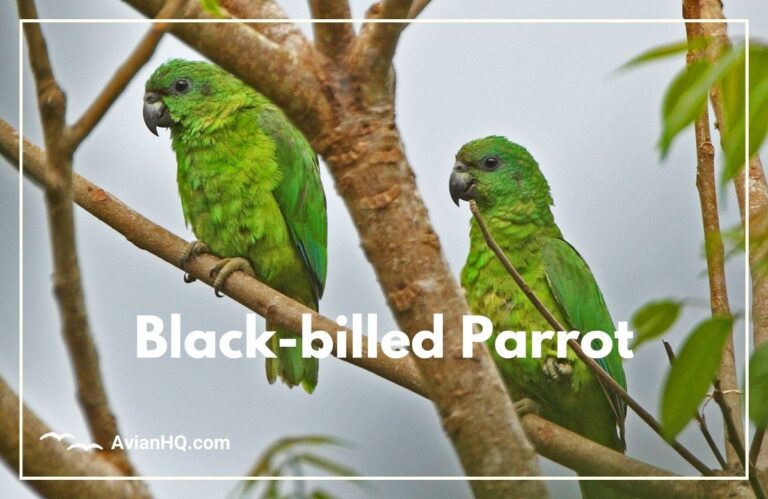Genus: Amazona
As a parrot lover, you’re surely familiar with the vibrant green plumage and talent for talk and tricks that Amazon parrots are renowned for. But within the Amazona genus there exists incredible diversity – 34 extant species and at least 2 that are now extinct. Ranging from Mexico down to Argentina, these medium-sized parrots have adapted to a variety of habitats from rainforests to savannas.
“The taxonomy of the Amazona genus remains disputed – scientists continue working to unravel the evolutionary relationships among these very similar species.”
In this blog, you’ll explore what defines these parrots, spotlight some of the most spectacular species, delve into their behaviors and intelligence, learn why they are so threatened, and discover what makes them such charismatic and iconic birds.
While Amazons may seem abundant as popular pets, many species face grave threats in the wild. Habitat loss and overcollection for the pet trade have endangered multiple species, including the iconic Puerto Rican Amazon.
Through evolving conservation strategies and protective laws though, we can ensure Amazons continue dazzling us with their antics and amazing abilities. Understanding what makes each species unique is the first step on this journey.
Species Spotlights
The Amazona genus contains 34 recognized species, plus at least 2 that are now extinct. Here is a quick overview:
Blue-fronted Amazon (Amazona aestiva): Large green parrots with blue foreheads, 13-15 inches (38 cm) long
Black-billed Parrot (Amazona agilis): Green with small red patches on wings, black bill; 10 inches (25 cm)
White-fronted Parrot (Amazona albifrons): Green with white forehead, blue crown, red facial patches; 10 inches (25 cm)
Orange-winged Parrot (Amazona amazonica): Mostly green with some blue and yellow on head, orange in wings and tail; 13 inches (33 cm)
Red-necked Parrot (Amazona arausiaca): Mainly green with blue forehead, white eye rings, red throat patch; 16 inches (40 cm)
Yellow-naped Parrot (Amazona auropalliata): Green with yellow nape band; 13-15 inches (33-38 cm)
Red-lored Parrot (Amazona autumnalis): Green with red forehead and crown, blue streaks behind eyes; 13-14 inches (32-35 cm)
Yellow-shouldered Parrot (Amazona barbadensis): Green with white forehead and yellow crown, bare white eye rings; 13 inches (33 cm)
Red-tailed Parrot (Amazona brasiliensis): Green with purple crown, blue cheeks, red tail; 14 inches (37 cm)
Yellow-billed Parrot (Amazona collaria): Green with white face and forehead, pink throat; 11 inches (28 cm)
Diademed Parrot (Amazona diadema): Mostly green with red, black, and blue accents; 13 inches (33 cm)
Blue-cheeked Parrot (Amazona dufresniana): Green with blue cheeks; 14 inches (35 cm)
Southern Mealy Parrot (Amazona farinosa): Mostly green, some yellow on forehead and crown; 15-16 inches (38-41 cm)
Festive Parrot (Amazona festiva): Green with red forehead and blue outer wing feathers; 12-15 inches (30-38 cm)
Lilac-crowned Parrot (Amazona finschi): Green, maroon forehead and violet-blue crown; 12-14 inches (30-35 cm)
Northern Mealy Amazon (Amazona guatemalae): Similar to Southern Mealy but smaller, has dark gray beak; 12-13 inches (30-33 cm)
St. Vincent Parrot (Amazona guildingii): Mostly green with multi-colored head, greenish-bronze back; 16 inches (40 cm)
Imperial Parrot (Amazona imperialis): Mainly green with purple neck and green-tipped red tail; 18 inches (45 cm)
Kawall’s Parrot (Amazona kawalli): Large mostly green parrot with white facial skin; size unclear
Cuban Parrot (Amazona leucocephala): Primarily green with white face, pink throat, brownish belly; 11-13 inches (28-33 cm)
Scaly-naped Parrot (Amazona mercenarius): Mostly green; size information unavailable
Yellow-crowned Parrot (Amazona ochrocephala): Mainly green with variable yellow on crown; 13-15 inches (33-38 cm)
Yellow-headed Parrot (Amazona oratrix): Green with yellow head; 14-15 inches (35-38 cm)
Red-spectacled Parrot (Amazona pretrei): Green with red forehead and eye patches; 12.5 inches (32 cm)
Red-browed Parrot (Amazona rhodocorytha): Green with red forehead and crown, yellow and blue face; 14 inches (35 cm)
Tres Marías Parrot (Amazona tresmariae): Forest green with dull blue flight feathers; 11-12 inches (28-30 cm)
Tucuman Parrot (Amazona tucumana): Green with black-edged back feathers, red forehead and wings; 12 inches (31 cm)
Hispaniolan Parrot (Amazona ventralis): Mostly green with blue flight feathers and maroon belly; 11-12 inches (28-31 cm)
St. Lucia Parrot (Amazona versicolor): Mostly green with blue face and forehead, red breast fading to maroon and mottled belly; 16-17 inches (40-43 cm)
Vinaceous Parrot (Amazona vinacea): Mostly green with red forehead, bluish nape, vinous-maroon colored breast; 12 inches (30 cm)
Red-crowned Parrot (Amazona viridigenalis): Green with bright red forehead and crown; 13 inches (33 cm)
Puerto Rican Parrot (Amazona vittata): Green with bright red forehead, white eye rings; 11-12 inches (28-30 cm)
Yellow-lored Parrot (Amazona xantholora): Mostly green with blue crown, yellow facial patches, grey beak; size unknown
Yellow-faced Parrot (Alipiopsitta xanthops): Was classified as an Amazona, has now been moved to its own genus; size unclear
Behavior and Intelligence
Amazon parrots are highly intelligent birds and their behavior reflects the dexterity and adaptability that has allowed them to thrive across an enormous range of Central and South American habitats.
Vocal Abilities
One of the Amazons’ most remarkable abilities is their capacity to mimic human speech and other sounds with a high degree of accuracy. Some species and individuals demonstrate extremely large vocabularies. This vocal talent is thought to be used for communication between flock members in the wild and also with potential mates.
Interestingly, yellow-naped Amazon parrots have dialects in their contact calls and vocabulary that vary regionally but remain stable over time. This suggests different evolutionary adaptations to the local environment.
“With vocal abilities to rival parrots 10 times their size, Amazons showcase the brainpower packed into these medium-sized flyers.”
Social Behavior
Amazons form large, gregarious flocks, foraging, roosting, and nesting together with synchronized routines. Pairs also demonstrate consistent bonding behaviors. Their communication utilizes both vocalizations and gestures.
Flocks have coordinated schedules, alternating feeding and resting periods. Synchronized flight patterns when traveling and foraging likely help reduce predation risk in the vulnerable moments the parrots spend on the ground eating.
Feeding and Foraging
The Amazona diet consists mainly of seeds, nuts, fruits, and vegetation. Their strong beaks and dexterous feet allow them to easily extract nuts and seeds from fruit or pods.
When living communally, competition for food resources may be intense but reciprocal relationships also form – some studies indicate that Amazon pairs increase their reproductive success when foraging in groups. This feeding behavior and its connections provide insights into Amazon evolution and adaptability.
Cultural Significance
Amazon parrots have special meaning for indigenous cultures across the Americas as well as the general public due to their beauty, intelligence, and abilities as mimics.
Symbolism
Various Amazon species have been represented in the cultural artifacts and legends of native peoples throughout Mexico, Central America, and South America. Their bright plumage and vocal capabilities seem to have captivated early societies.
The Lilacine Amazon specifically appears to have held religious significance, as its image has been found carved into Moche ceramics from ancient Peru. Amazons more broadly were likely viewed as messengers between spiritual and earthly realms.
Pets & Entertainment
Many Amazon species are popular pets today due to their longevity, trainability, and talking ability. The playful Orange-winged Amazon is especially common, renowned for learning words and phrases.
Performing parrots were also historically popular entertainment. Some accounts indicate that Amazon-type parrots traveled on sailing ships to delight crew members with their vocal fun. Today they frequently appear in television shows and media for their hijinks.
Conservation Flagships
Given threats from the pet trade and habitat loss, conservation groups have rallied around endangered Amazon species to catalyze research and protective actions.
The Puerto Rican Amazon, with fewer than 500 existing worldwide, has become an iconic bird for inspiring recovery efforts focused both on captive breeding and rainforest restoration. Its story resonates around the world.
Threats and Conservation
Though Amazons number in the millions across the Americas, many species face concerning threats – primarily from habitat loss, overcollection for the pet trade, and the introduction of invasive species.
Habitat Loss
The clearing of native rainforests and woodlands for agriculture and development has endangered multiple Amazona species, especially island endemics like the Puerto Rican and St. Vincent Amazon.
As productive nesting areas shrink, wild populations decline. Even viable forest fragments may not provide sufficient food resources. Preventing further habitat destruction is essential.
Wild-Caught Pet Trade
Hundreds of thousands of wild-caught Amazons entered the international live parrot trade legally and illegally over past decades. Smugglers have gone so far as dying feathers to disguise identities.
While regulations now limit this practice, illicit trapping continues across Latin America. The scale severely threatens regional populations and undermines conservation efforts.
Conservation Strategies
Through designated protected lands, controlled legal trade, captive breeding initiatives, and public education programs, researchers and advocates are working to secure Amazon futures in the wild.
The Puerto Rican Parrot recovery program stands as one model – protective legislation, supplementary feeding, nest boxes, and a second aviary site helped rebuild the species from just 22 birds in 1975 to over 500 today. Similar multifaceted approaches can restore other declining Amazons.
Conclusion
Amazon parrots astonish with their intelligence, adaptability, and vocal talents. The 34 species of the Amazona genus showcase an incredible diversity of shape, size, and coloration.
Yet for all their ubiquity as pets and popularity in media, many populations in the wild are threatened by habitat loss and overcollection from the illegal trade. Iconic species like the Puerto Rican Amazon teeter on the brink while scientists race to enact conservation initiatives.
What defines these charismatic, gregarious parrots is not just their bright plumage but their behavior – the ways they communicate, forage, form social bonds, and pass learned traditions between generations. Protecting the forests Amazons call home ensures we continue learning from the dynamic cultures of these captivating birds.
From the diminutive 10 inch (25 cm) Black-billed Parrot to the imposing 18 inch (45 cm) Imperial Amazon, each species has an important role to play in its native ecosystem. Preserving robust and diverse wild populations allows species’ full behaviors and interrelationships to unfold.
The taxonomy of Amazon parrots remains disputed, with evolutionary connections still being untangled. Advancing our knowledge through further study could reveal new cultural insights and refine conservation priorities across the Americas.
By supporting responsible breeding programs for the pet trade and donating to habitat protection efforts, everyone can contribute to securing the long-term survival of these exceptionally intelligent birds. The vibrant world of Amazon parrots continues to have so much more to teach us.








I am sorry, that I interfere, would like to offer other decision.